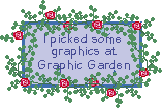| After your quilt is tied or quilted, the edges need
to be finished. Decide how you want the edges of your
quilt finished before layering the backing and batting
with the quilt top. Without
Binding--Self-Finish-- The disadvantage to this method is that once the edges are sewn in, any creases or wrinkles that might form during the quilting process cannot be flattened out. Tying is the preferred method for finishing a quilt constructed using this method. Bringing the backing fabric to the front is another way to finish the quilt's edge without binding. To accomplish this, complete the quilt as for hand or machine quilting. Trim the batting only even with the front. Trim the backing 1" larger than the completed top all around. Turn the backing edge in 1/2" and then turn over to the front along edge of batting. The folded edge may be machine-stitched close to the edge through all layers, or blind-stitched in place to finish. The front may be turned to the back. If using this method, a wider front border is needed. The backing and batting are trimmed 1" smaller than the top and the top edge is turned under 1/2" and then turned to the back and stitched in place. One more method of self-finish may be used. The top and backing may be stitched together by hand at the edge. To accomplish this, all quilting must be stopped 1/2" from the quilt top edge. The top and backing of the quilt are trimmed even and the batting is trimmed to 1/4"-1/2" smaller. The edges of the top and backing are turned in 1/4"-1/2" and blind-stitched together at the very edge. These methods do not require the use of extra fabric and save time in preparation of binding strips; they are not as durable as an added binding. Binding-- To prepare the quilt for the additin of the binding, trim the batting and backing layers flush with the top of the quilt using a rotary cutter and ruler or shears. Using a walking-foot attachment (sometimes called an even-feed foot attachment), machine-baste the three layers together all around approximately 1/8" from the cut edge. The list of materials given with each quilt often includes a number of yards of self-made or purchased binding. Bias binding may be purchased in packages and in many colors. The advantage to self-made binding is that you can use fabrics from your quilt to coordinate colors. Double-fold, straight-grain binding and double-fold, bias-grain binding are two of the most commonly used types of binding. Double-fold, straight-grain binding is used on smaller projects with right-angle corners. Double-fold, bias-grain binding is best suited for bed-size quilts or quilts with rounded corners. To make double-fold, straight-grain binding, cut 2"-wide strips of fabric across the width or down the length of the fabric totaling the perimeter of the quilt plus 10". The strips are joined as shown in Figure 1 and pressed in half wrong sides together along the length using an iron on a cotton setting with no steam. Lining up the raw edges, place the binding on the top of the quilt and begin sewing (again using the walking foot) approsimately 6" from the beginning of the binding strip. Stop sewing 1/4" from the first corner, leave the needle in the quilt, turn and sew diagonally to the corner. Fold the binding at a 45-degree angle up and away from the quilt and back down flush with the raw edges. Starting at the top raw edge of the quilt, begin sewing the next side. Repeat at the next three corners. |



